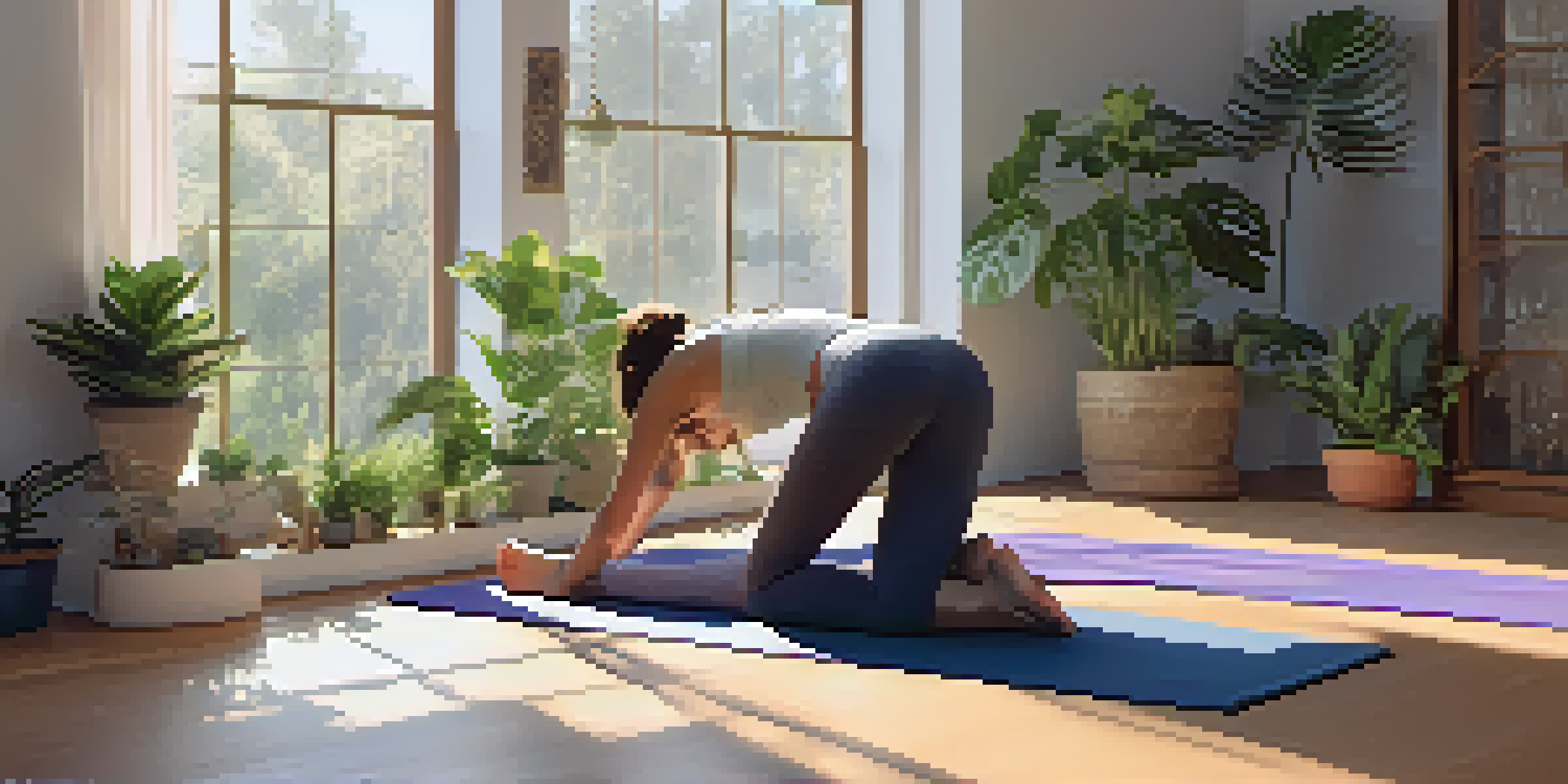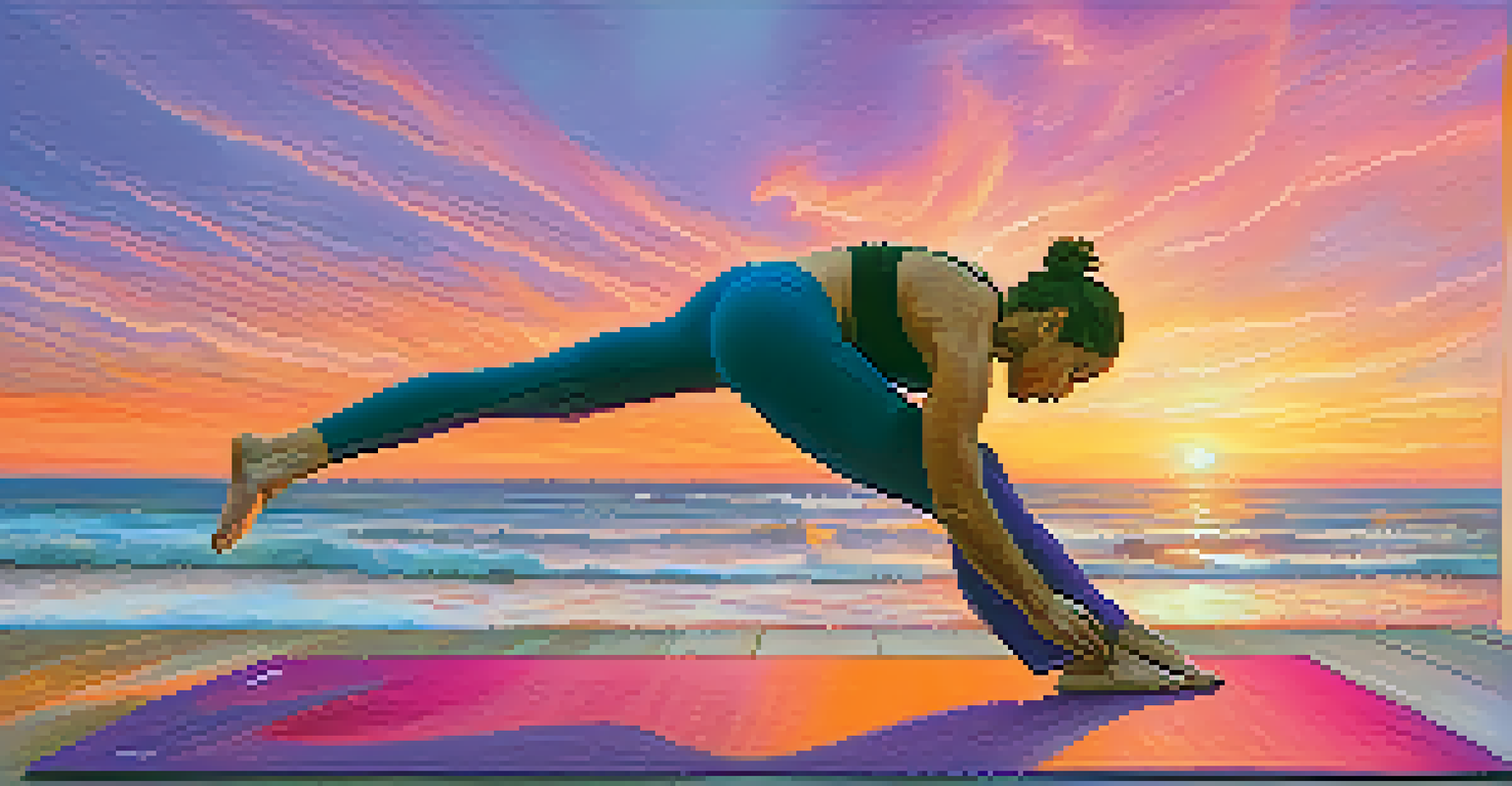The Best Yoga Poses for Alleviating Lower Back Pain

Understanding Lower Back Pain and Its Causes
Lower back pain is a common ailment that many people experience at some point in their lives. It can stem from various causes, including poor posture, muscle strain, or even stress. Understanding the root cause of your discomfort is essential for finding effective relief.
Yoga is the journey of the self, through the self, to the self.
Many individuals spend long hours sitting, whether at a desk or in a car, which can lead to tightness in the lower back. Additionally, factors like obesity and lack of physical activity can exacerbate these issues. By identifying these triggers, you can start to address the pain more effectively.
Yoga offers a holistic approach to alleviating lower back pain by promoting flexibility, strength, and relaxation. Incorporating specific poses into your routine can help ease tension and improve your overall well-being.
Child's Pose: A Gentle Stretch for the Back
Child's Pose, or Balasana, is a restorative yoga pose that stretches the spine, hips, and thighs. It’s an excellent starting point for anyone experiencing lower back discomfort. Simply kneel on the floor, sit back on your heels, and stretch your arms forward while resting your forehead on the mat.

This pose encourages relaxation and can help release tension built up in the lower back. It’s also an invitation to connect with your breath, allowing you to unwind mentally and physically. Hold this pose for a few breaths, feeling the gentle stretch in your back.
Identify Causes of Back Pain
Understanding factors like poor posture and muscle strain is essential for effective relief from lower back pain.
Incorporating Child's Pose into your daily routine can provide a soothing respite from daily stressors and contribute to long-term back health. It’s a reminder to listen to your body and give it the care it needs.
Cat-Cow Stretch: Mobilizing the Spine
The Cat-Cow Stretch is a dynamic movement that warms up the spine and helps improve flexibility. This pose involves moving between two positions: arching your back like a cat and then dropping your belly while lifting your head and tailbone, resembling a cow. It’s a fantastic way to alleviate tension in the lower back.
The body is your temple. Keep it pure and clean for the soul to reside in.
As you flow between these two positions, focus on your breath. Inhale deeply while moving into Cow Pose and exhale as you transition into Cat Pose. This rhythmic movement not only enhances spinal mobility but also engages your core muscles, providing support to your lower back.
Practicing the Cat-Cow Stretch regularly can help counteract the effects of prolonged sitting and reduce stiffness. It’s a simple yet effective addition to your morning or evening routine.
Downward Facing Dog: Strengthening the Back
Downward Facing Dog, or Adho Mukha Svanasana, is a well-known yoga pose that strengthens the entire back and stretches the hamstrings. To get into this pose, start on all fours and lift your hips towards the ceiling, forming an inverted V shape with your body. Make sure to keep your knees slightly bent to avoid straining your lower back.
This pose not only stretches the spine but also builds strength in the arms and legs. By engaging your core, you create a supportive foundation for your back. Hold the pose for several breaths, allowing your body to relax deeper into the stretch with each exhale.
Yoga Poses for Back Relief
Incorporating specific yoga poses, such as Child's Pose and Downward Facing Dog, can help alleviate discomfort and promote overall back health.
Incorporating Downward Facing Dog into your routine can help counterbalance the effects of sitting by elongating the spine and encouraging better posture. It's a wonderful way to feel rejuvenated and aligned.
Pigeon Pose: Opening the Hips and Lower Back
Pigeon Pose, or Eka Pada Rajakapotasana, is particularly beneficial for releasing tension in the hips, which can directly affect lower back pain. Begin this pose from Downward Facing Dog by bringing one knee forward and placing it behind your wrist. Extend the opposite leg straight back while keeping your hips square to the mat.
As you settle into Pigeon Pose, you may feel a deep stretch in your hip and lower back. Make sure to keep your shoulders relaxed and your spine long. You can also fold forward to deepen the stretch, but only if it feels comfortable.
Practicing Pigeon Pose regularly can help improve flexibility in the hips, thereby alleviating strain on the lower back. It’s an excellent way to foster a deeper connection to your body and promote overall relaxation.
Bridge Pose: Strengthening the Lower Back Muscles
Bridge Pose, or Setu Bandhasana, is a fantastic way to strengthen the muscles of the lower back while providing a gentle stretch. To perform this pose, lie on your back with your knees bent and feet flat on the floor, hip-width apart. Press your feet into the ground as you lift your hips towards the ceiling.
As you hold Bridge Pose, engage your glutes and core to protect your lower back. This pose not only strengthens the back but also opens up the chest, promoting better posture. Hold for several breaths, feeling the strength and stability in your lower back.
Establish a Consistent Practice
Creating a regular yoga routine fosters strength and flexibility, empowering you to manage lower back pain effectively.
Incorporating Bridge Pose into your routine can help create a balance between strength and flexibility, contributing to long-term relief from lower back pain. It’s a powerful reminder of how strength can coexist with relaxation.
Supine Spinal Twist: Releasing Tension in the Back
The Supine Spinal Twist, or Supta Matsyendrasana, is an effective pose for gently stretching the lower back and improving spinal mobility. To practice this pose, lie on your back and bring one knee towards your chest. Allow that knee to fall across your body while keeping the opposite arm extended out to the side.
This twist helps release tension in the spine and promotes relaxation. Be sure to breathe deeply, using each exhale to sink deeper into the stretch. You can hold this pose for several breaths before switching sides.

By incorporating the Supine Spinal Twist into your routine, you can enhance flexibility in your lower back and reduce discomfort. It’s a gentle reminder of the power of movement and relaxation working hand in hand.
Creating a Consistent Yoga Practice for Back Health
Establishing a consistent yoga practice can be a game changer for managing lower back pain. Aim to dedicate a few minutes each day to these poses, allowing your body to gradually build strength and flexibility. Consistency is key when it comes to seeing long-term benefits.
Consider integrating mindfulness and breathwork into your routine as well. This holistic approach not only addresses physical discomfort but also promotes mental well-being. By being present during your practice, you can cultivate a deeper awareness of your body’s needs.
Ultimately, yoga is about finding balance and nurturing your body. By committing to a regular practice, you can empower yourself to alleviate lower back pain and enhance your overall quality of life.